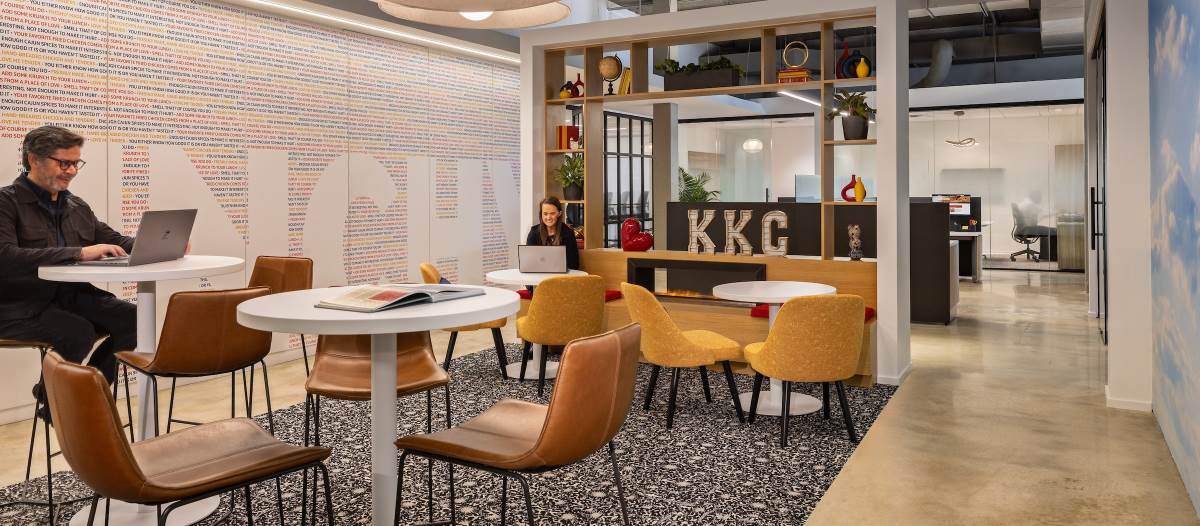Space-as-a-Service
Turning the tide & adapting to workplace shifts

In the world of hybrid work, the ability to scale and adapt flexibly and responsively is critical to the growth and success of the facility management and the corporate real estate (CRE) industries. The rise of purpose disassociated from physical office space has fueled a new focus on dynamic occupancy and significantly changed the game in the supply and demand of space. Gone are the days of business as usual, with every employee having a desk. Instead, space should be unassigned, flexible and adaptable to fulfill employees’ preferences for an elastic, purpose-driven workplace.
Work is still evolving – and data plays a critical role
Organizations can stop guessing what the future of work will look like. It is clearer than ever that hybrid work is here to stay. With that in mind, most of the world’s real estate remains unoccupied. While the average was 50 percent occupancy before the pandemic, equating to thousands of offices remaining vacant, COVID-19’s damage is still in effect. In many areas, occupancy has fallen below 25 percent, leaving more than 75 percent of offices as barren as the day they were built.
Outside of establishing a baseline, prepandemic historical occupancy patterns of data are no longer relevant. To forecast space demand in today’s landscape, FM and CRE execs must learn to see around four corners – but they cannot do that without data.
Purpose is the new “business as usual”
CRE occupancy levels are not too surprising when you consider that many corporations have pledged their commitment to remote-first policies during the height of COVID-19. On the other hand, far larger firms have incurred employee complaints when reinstating return to office policies.
Contrary to what some senior leaders may have hoped, many people expect their employers to remain flexible. They want the freedom to live wherever they want, regardless of where their employer’s offices are located. This compounds the problem many organizations already face as talent shortages and hiring difficulties reached a 15-year high. This brings the need for a change in mindset among FMs and CREs to the forefront in order to adapt to the new dynamics of hybrid work.
The increasing importance of purpose, disassociated from physical place, is the key driver in the evolving conversation around hybrid work. What it means to go to the office has also shifted – and instead of it being the primary venue of workplace productivity, that space now often fulfils other needs, such as getting together with colleagues and in-person meetings. The impacts for
FM and CREs come largely in the form of recognizing the prioritization of purpose in the value an office space fulfills and to adjust accordingly in the form of data-led workspace design, rather than expecting work to go back to the way it looked before.
Space-as-a-Service should change how facility managers look at office spaces
The abrupt transition to remote work – and the subsequent discovery that employees frequently prefer it – has led to a greater focus on dynamic occupancy among FMs and CREs. Think of it as Space-as-a-Service (SaaS).
The idea is to create spaces that inspire people when they come in, foster productivity and ignore the molds of the past, regardless of how effective they may have been previously. Instead of a one-and-done outfitted space with a single purchase of desks, chairs, tables and conference phones, FMs and CREs should be more flexible in their approach to how they design and organize space. It is equally as important that they are elastic in how every piece of furniture is deployed within each space, whether working with small rooms or larger, more open environments.
The world of work is evolving, and FMs and CREs must be cognizant of the way in which spaces should be modified to align with changing employee needs. As the purpose of the office and the physical space it occupies continues to shift, employee purpose – their reason for how, why, where and when they work – is paramount.
This could be as simple as adjusting a conference room as large, in-person meetings decline and smaller gatherings increase. Instead of one big, open space, employees may get more use out of a conference room that is divided into smaller spaces to enable them to collaborate in person.
A new mindset to empower employees in the hybrid environment
FMs and CREs must begin to ask themselves: What is the purpose behind a return to office when employees have the technology to work anywhere and simply hop on a video call? That purpose is supported by space, but space is not the purpose itself.
There could be any number of reasons why someone prefers one working arrangement over another. At times that seems to be the missing link. FMs and CREs are certainly the experts, but they need to understand that we no longer live in a world where people will obediently come in and sit where they are told. Many employers still use the allure of free food to attract applicants, but if there is no clear purpose for coming in beyond snacks and the occasional lunch, people will want to stay home.
Create flexible spaces people want and expect
The future of work and where it is conducted will be guided by purpose, not place. FM and CRE can stay ahead of this trend – and ultimately fulfill the needs of all employees – by adopting an elastic approach to the way their spaces are designed and organized. This is where SaaS comes into play. Instead of a one-size-fits-all office, the idea of SaaS is that people can and should work when and where they desire. By adopting a SaaS mindset, FM and CRE can create the desirable and highly flexible spaces that people want and have come to expect.

References
cnbc.com/2022/10/26/stanford-universitys-nick-bloom-says-hybrid-work-is-here-to-stay
upwork.com/press/releases/economist-report-remote-workers-on-the-move
go.manpowergroup.com/talent-shortage
Read more on Occupancy & Human Factors , Real Estate and Workplace
Explore All FMJ Topics









